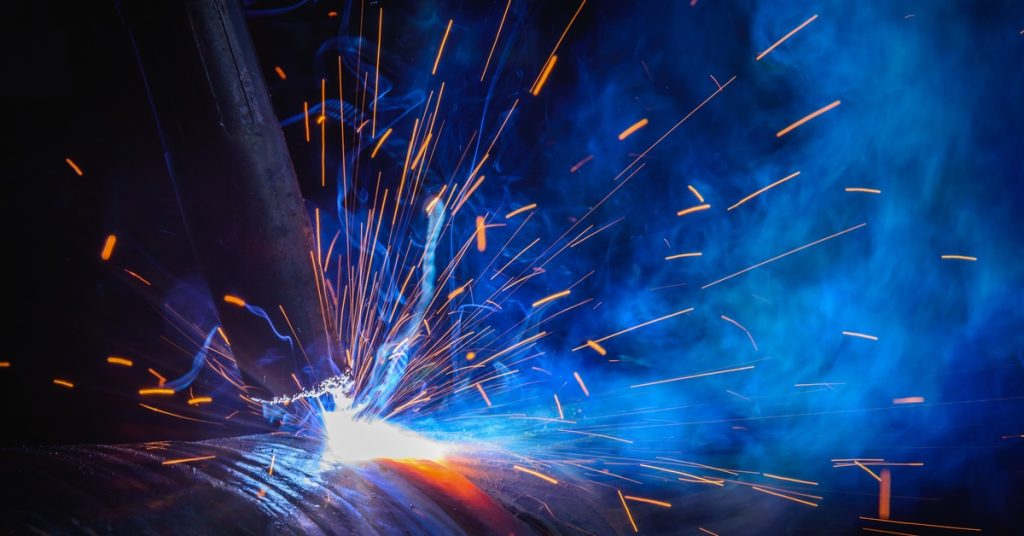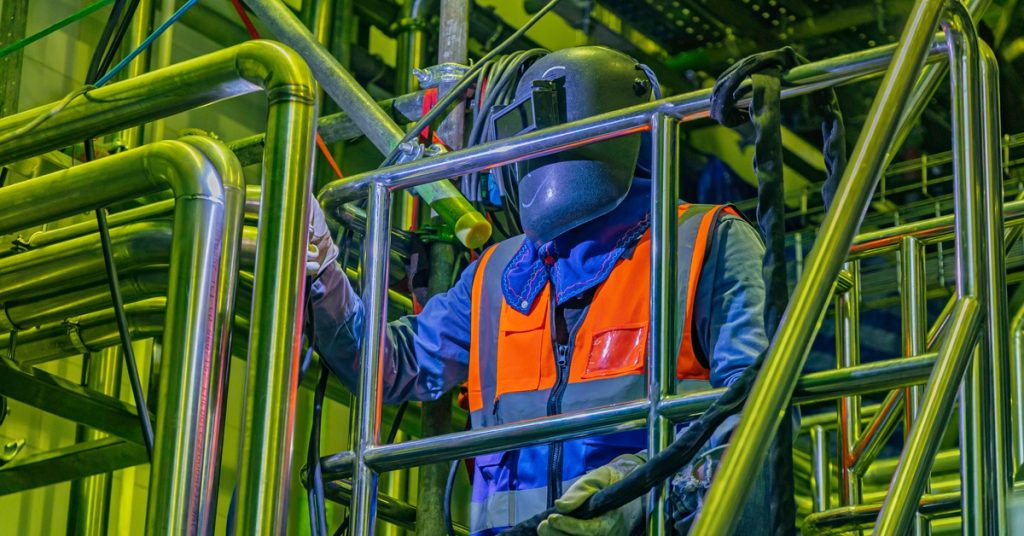Welding is inherently hazardous. Welders face serious threats, including high temperatures, arc flashes, toxic fumes, and electric shock, on the job. Automation in industrial settings has become a cornerstone of workplace safety.
Understanding how orbital welding automation prioritizes safety illuminates why facilities are moving away from fully manual processes. Let’s take a closer look at the types of injuries these systems prevent and how they do so.
Burns and Thermal Exposure
Direct exposure to heat and molten materials is one of the most immediate dangers in manual welding. Arc temperatures can exceed 10,000 degrees Fahrenheit, and improperly shielded equipment can transfer heat to the skin in seconds.
Instead of working with a hand torch inches from hot metal, operators set up orbital weld heads that automatically circle the pipe or tube. Because the arc is shielded and the weld is remotely activated, workers are physically removed from the heat source.
Preprogrammed parameters and uniform weld speeds also minimize unintentional overheating of materials, reducing surface temperatures that could otherwise cause accidental burns.
Eye Damage and Arc Flash
Arc flash injuries, including photokeratitis and retinal burns, are among the most debilitating risks for welders. Brief exposure to a high-intensity arc can cause permanent damage to vision.
Modern orbital heads have integrated shielding or enclosures that block ultraviolet and infrared radiation. Unlike manual TIG welding, where face shields and proximity to the arc remain necessary, operators using orbital systems can stand several feet away or monitor the process through video feeds. Many setups also allow for welding inside cabinets or behind protective glass, offering an added layer of protection for sensitive eye tissue.

Inhalation of Fumes and Gases
Welding fumes are toxic. Prolonged exposure to airborne particles, such as manganese, chromium, and nickel, can lead to serious respiratory issues, including occupational asthma and metal fume fever.
Orbital welding automation helps to reduce inhalation risks in several ways. First, automated weld heads produce consistent, repeatable arcs, which generate fewer irregular burn-offs that contribute to airborne contaminants. Second, the remote operation allows workers to remain several feet—or several rooms—away from the weld.
In many facilities, the operator is behind a transparent polycarbonate barrier or inside a control booth outfitted with active ventilation. These enclosures trap fumes at the source and direct them toward extraction systems, unlike manual setups where the welder’s own body can obstruct localized fume hoods.
Electrical Shock and Arc Faults
Electric shock is a top hazard for welders, particularly in environments where moisture, conductive surfaces, or poor grounding are present. Low-voltage contact can cause muscle contractions or burns, while high-voltage arcs can be fatal.
Many AMI orbital fusion welding systems use low-voltage control circuits to limit operator exposure to dangerous currents. Power distribution is precisely regulated, and automatic shutoff features activate in the event of arc irregularities, overcurrent, or incomplete grounding.
Additionally, wiring and circuit boards are enclosed in insulated NEMA-rated housings that protect against water ingress and accidental contact. Because the operator doesn’t physically handle the electrode or torch once welding begins, their exposure to live current lowers.
Repetitive Strain and Ergonomic Stress
Manual welding often requires awkward body positions, prolonged postures, and repetitive arm movements. Over time, these demands can lead to musculoskeletal disorders, most notably in the shoulders, neck, and lower back.
Instead of crouching beneath a pipe or holding a steady arc overhead for extended periods, operators position the orbital head and start the weld with a control unit. Setup still requires some physical effort, but it puts far less strain on their bodies.
The machine now handles repetitive motions. In production settings, this limits the number of monotonous actions per shift and reduces the risk of developing conditions like carpal tunnel syndrome or tendonitis.
Confined Space and Elevated Work Hazards
Welding in tight spaces, on ladders, or near overhead structures adds danger to any job. Slips, entrapment, and limited mobility can compound typical welding hazards. Fortunately, orbital systems reduce the time workers must spend in these high-risk positions or eliminate the need entirely.
For instance, pipe welds in mechanical rooms or ships commonly occur in cramped quarters. By using a clamshell-style orbital welder, a technician can mount the tool on the pipe from a safer location, set parameters, then retreat to a nearby monitoring station.
Some systems allow for remote control via tablet or pendant, removing the operator from the danger zone. Automation also reduces time spent on scaffolding or lifts, cutting down on fall risks and the need for extended overhead work.

Crush Injuries and Pinch Points
Setting up and adjusting heavy welding equipment exposes workers to pinch points, crush hazards, and unexpected machine movement. Orbital welders mitigate this in several ways. Most modern units have mechanical interlocks and limited-force actuators that prevent sudden, unplanned motion. Additionally, many orbital weld heads clamp onto piping with adjustable tension settings and built-in safeguards to prevent over-tightening or mechanical failure during setup.
Numerous systems use torque-limited motors that stop if resistance exceeds safe levels, minimizing risk during alignment or detachment. Training is still required before use, but automation reduces the likelihood of error-based accidents when working with heavy or pressurized components.
Slip Hazards and Workspace Congestion
Traditional welding includes trailing wires, gas hoses, and power cords stretched across the floor, especially in large fabrication areas. This heightens the risk of slips, trips, and falls. With orbital welding, the setup tends to be more consolidated.
Cabling goes to a single central control unit, and welding heads are mounted on fixtures or tracks, minimizing floor clutter. In automated setups, operators can plan cable routing more deliberately, reducing the frequency of repositioning equipment. Many systems are also modular, making cleanup and reconfiguration easier between jobs.
Next Steps for Safer Welding
Orbital welding automation prioritizes safety across multiple risk categories, from reducing arc flash to limiting crush hazards. Even with the best technology in place, it’s important to select the right equipment and receive training to maximize the full potential of your system.
If you want to improve safety outcomes and increase efficiency, SEC Industrial provides both rental and purchase options for orbital welders and related safety equipment. With extensive experience across various sectors, we can help you identify the right solution for your application and back it up with technical support and service you can rely on.